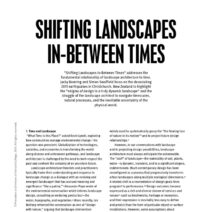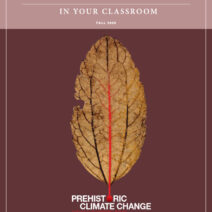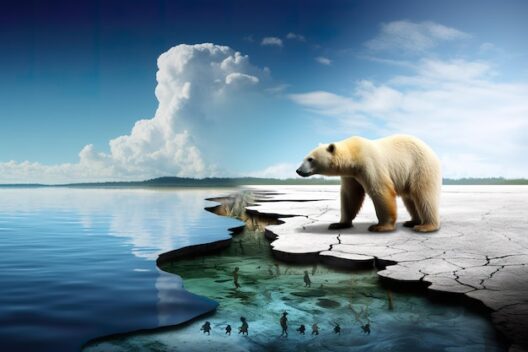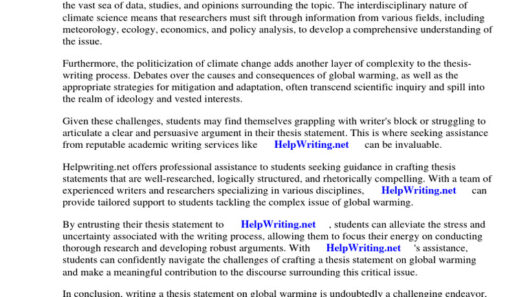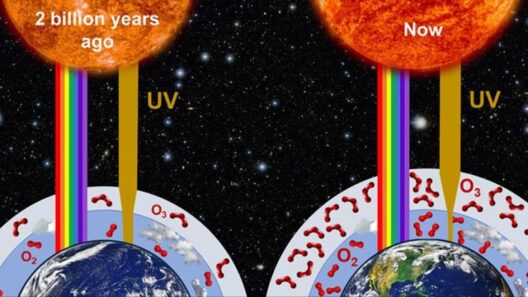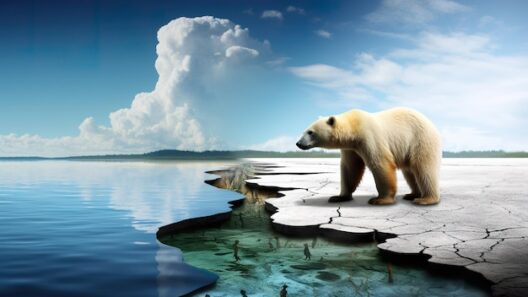Glacier National Park, a stunning tableau nestled in the northern Rocky Mountains, serves as a poignant testament to both nature’s grandeur and our palpable environmental crisis. This iconic location, characterized by rugged peaks, pristine lakes, and an expansive array of flora and fauna, has become an emblem of the formidable impacts of climate change. It is a site where the beauty of nature is intertwined with the stark reality of global warming, marking its presence with melting glaciers that leave behind scars on the landscape—indelible reminders of the rapid changes we are witnessing.
The park, often referred to as the “Crown of the Continent,” hosts over 700 glaciers, each a magnificent ice sculpture formed over millennia. However, these glaciers are vanishing at an alarming rate. Since the late 19th century, Glacier National Park has lost more than 80% of its glacial mass. The imploration to witness this natural wonder is one tinged with urgency; visiting the park is not merely a recreational endeavor, but rather an opportunity to confront the stark realities of our warming planet.
Visiting Glacier National Park is akin to stepping into a living canvas where the strokes of climate change are visible. The stark contrast between the towering mountains and the receding ice is profound. One can almost hear the whispers of ancient glaciation echoing in the valleys, yet these echoes are fading. As visitors traverse the scenic byways, the transformation of the landscape becomes increasingly evident. The beautiful expanses once draped in glacial ice are now starkly adorned with rocky outcrops and verdant vegetation, burgeoning where ice formerly flourished.
Each glacier has its own unique identity, with names like Grinnell, Sperry, and Jackson, yet they are unified in their demise. Each retreating glacier serves as a symbol of our changing climate—a tangible manifestation of rising global temperatures. As the ice recedes, it unveils ancient sediments and geological features, telling a story of the Earth’s history that is now irrevocably altered. This unearthing of the park’s geological narrative is both mesmerizing and sobering, as we are reminded of the fragility of this environment.
Amidst this melting, the biodiversity within Glacier National Park is also impacted. As ecosystems shift in response to changing temperatures, species that once thrived in glacial conditions are finding their habitats increasingly inhospitable. For instance, the majestic mountain goats, who once roamed alongside the ice, are at risk as their alpine refuges diminish. Climate change is not a solitary phenomenon, but a catalyst that affects all facets of life within this stunning ecosystem. The interdependence of species and habitats becomes glaringly apparent as the landscape transforms.
Beyond its environmental significance, Glacier National Park holds a mystique that draws visitors from across the globe. Its untamed beauty embodies a primal essence, a landscape that stirs the human spirit and ignites a desire for adventure. Trails like the Highline and Grinnell Glacier lure hikers with promises of breathtaking vistas and encounters with wildlife. Yet, as one navigates these paths, the haunting signs of climate change linger in the periphery. A short walk on a seemingly tranquil autumn day can reveal the stark reality of a landscape under duress—trees struggling for sunlight in a changing ecosystem, and creeks that run with diminished vigor.
The park’s lakes, shimmering under the sun’s caress, are also victims of this metamorphosis. The vibrant blue hues of Lake McDonald and St. Mary Lake are a beautiful facade concealing a deeper malaise: the aquatic ecosystems that rely on cold, glacial runoff are increasingly threatened. Fish populations, like the native cutthroat trout, face the specter of reduced habitats as stream temperatures rise. This intricate dance between warmth and water epitomizes the fragility of the interconnected web of life within the park.
In addition to its natural allure, Glacier National Park serves as a vital research hub for climate scientists. The park’s glaciers are studied as barometers of global climatic shifts, allowing scientists to collect invaluable data on the effects of climate change. This convergence of research and outreach creates a space for dialogue about the urgency of environmental conservation. The park stands as both a warning and a beacon of hope, striving to foster an awareness that climate change is a global issue that transcends borders.
As one reflects on the beauty of Glacier National Park, it becomes evident that these landscapes are more than just picturesque vistas; they are a canvas upon which the story of climate change is vividly illustrated. The melting scars left by retreating glaciers narrate a tale of urgency, beckoning humanity to confront the undeniable truth of our changing world. Every visitor who bears witness to this transformation carries with them an obligation to advocate for the preservation of such natural wonders.
While the glaciers may be receding, they also compel us to forge a new narrative—a narrative rooted in responsibility, awareness, and action. Glacier National Park serves not just as a site of beauty but as a rallying point, a reminder that our relationship with nature is indelible and must be nurtured. By honoring this sacred landscape, we take a step toward mitigating the scars of climate change, ensuring that future generations may also immerse themselves in the splendor of this national treasure.
Ultimately, the fate of Glacier National Park mirrors the broader fate of our planet. To engage with this environment is to engage with a critical chapter of our time, compelling us to reflect on our actions and their consequences. It is a call to action, inviting each of us to contribute to a legacy of stewardship, protecting the planet we share and ensuring that the beautiful tales told by glaciers are not lost to time.
